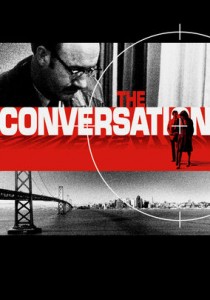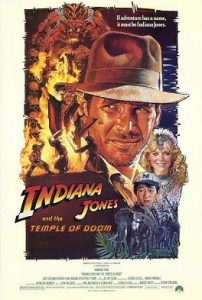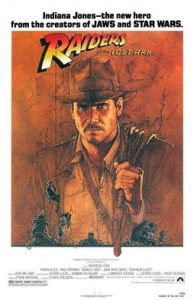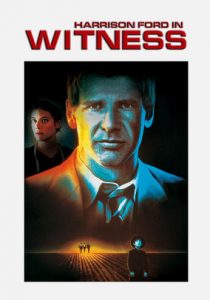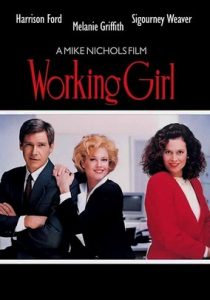Star Wars: Episode VII: The Force Awakens-2015
Director J.J. Abrams
Starring Harrison Ford, Carrie Fisher, Mark Hamill
Scott’s Review #540
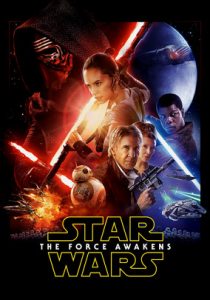
Reviewed December 8, 2016
Grade: B
As a youngster who grew up exposed to the original three Star Wars films (admittedly, I cannot keep track nor care enough to learn the exact chronological order of the franchise), the 2015 reincarnation is very nostalgic.
Star Wars (1977), The Empire Strikes Back (1980), and Return of the Jedi (1983) were magical films for a kid to enjoy.
I saw each one in the movie theater.
Sadly, The Phantom Menace in 1999 was a rather forgettable endeavor and did nothing to draw new fans to the franchise, nor keep existing fans engaged.
Taking center stage in this installment are beloved stalwart characters Han Solo (Harrison Ford), Princess Leia (Carrie Fisher), and Luke Skywalker (Mark Hamill) in a nostalgic trip down memory lane.
A slight gripe is the shamefully under-use of one of these characters.
The visual effects are impressive, the main villain is okay, and the action sequences adequate, but the ode to history keeps the long-time viewer engaged the most.
In a way, Star Wars: The Force Awakens is aptly titled as it is a rebirth of sorts for the storied franchise.
Legendary actor Max von Sydow is shamefully under-utilized in a throwaway part in the film’s first sequence.
He resembles deceased actor Alec Guinness, made famous again in the 1970s when he appeared in the first Star Wars.
A coincidence?
Filmmakers are going for a modern reboot of Episode IV (the 1977 Star Wars).
The main character of Rey (Daisy Ridley) is meant to be the new Luke Skywalker, who is known as a Jedi hero in the land and has been missing for years. Rey has special powers and is accompanied by her sidekick droid, BB-8, a similar character to R2-D2.
The villain is Kylo-Ren, son of Han Solo and Princess (now General) Leia, and reminiscent of Darth Vader.
The film is a classic tale of good versus evil as the evil First Order battles the good Resistance.
I enjoyed the good storytelling most of all and prominent roles for Han Solo and Leia were good choices for the storied franchise. Newcomers Rey and her love interest, Finn, are appealing, as are fighter pilot, Poe, played by Oscar Isaac.
Reportedly, this film is the start of another trio of films so we will undoubtedly see more of these characters.
I could not help but notice the Nazi similarities of the First Order and their soldiers, the Stormtroopers. Possessing a red quality and a Nazi-like salute to their supreme leader, they even look German in appearance.
Kylo-Ren, raven-haired, pale, and clad in a dark black cape, was derived from Darth Vader, especially when he appeared in mask attire.
He almost could have been his son.
Set thirty years since the original Star Wars, the plot is more or less similar, and I think this is a wise move in introducing the franchise to a new audience while staying true to the rich history of the central characters and their offspring.
Han Solo and Leia discuss their love affair, past adventures, and their son, who has been hypnotized to the dark side. They struggle to concoct a way to rescue him and hope to persuade him that aligning with the Resistance is the only way.
Favorite scenes include the ultimate showdown between Rey and Kylo-Ren. Set in a snowy, wintry forest, with their glistening and glowing lightsabers, the scene is visually gorgeous, as are the many scenes in one battle station or another.
The re-appearance of comical C-3PO is darling.
As with the original Star Wars, humor is mixed to lighten the mood. Han Solo and his dedicated side-kick Chewbacca, gently spar, and when Han Solo takes the group to a saloon filled with interesting creatures, the scene is light and fun.
The real drawback for me is that the film is not all that compelling save for the nostalgia aspects. It is a classic battle of two wills, but nothing new and exciting. Sure there are a few new characters, but the plot is rather basic and what one would expect.
I am not truly invested in the franchise, despite zillions of die-hard fans being fanatics of the films and their intricacies, so that is more of an opinion than a criticism of the merits.
Star Wars: Episode VII: The Force Awakens (2015) will undoubtedly please fans and introduce new ones to a world of galaxies, and the “force”.
A satisfying trip down memory lane.
Oscar Nominations: Best Original Score, Best Sound Editing, Best Sound Mixing, Best Film Editing, Best Visual Effects
